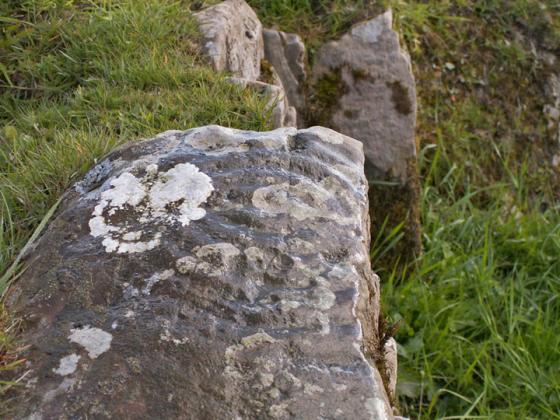
The caged Picts are on the other side of the rock outcrop from the cups.

The caged Picts are on the other side of the rock outcrop from the cups.

Some of the walling of the ramparts still pokes through the turf.

Shot of the Western side of the rock outcrop which bears the Pictish carvings on its Eastern side. Older than the Picts, older than the original Iron Age fort. Many peck-marked cups. Some with faint rings. Some joined by runnels. Lots more under the turf.

The z-rod and double-disc on the Pictish panel at the entrance.

The smiley-faced bone pin on the Pictish panel at the entrance.

Pictish symbols carved into rock outcrop close to the entrance.

Ditch at NNE

Remains of guard-hut close to entrance.
I liked Trusty’s Hill, unusually for an iron age hill-fort or any hill-fort for that matter it feels cosy. I know that sounds daft, but it does feel cosy. It doesn’t take much imagination to see the original occupants of this small fort sitting quite smugly looking out at the surrounding landscape. The fort was excavated in 1960 and this revealed evidence of two periods of activity, the original Iron Age construction and later work dating to the 6th-7th centuries of poorer quality. There is not a lot to see but there are remains of an oval stone built guard hut close to the entrance and the usual ramparts and ditches to examine. As a bonus there is, close to the entrance and the guard hut, some Pictish symbols carved into a rocky outcrop. A double disc and Z rod and a beastie thing that is less distinct these are under the protection of what looks like a tank trap!
May 2012 dig at Trusty’s Hillfort.
A page from the ‘Fifth Report and Inventory of Monuments and Constructions in Galloway’ (1914) that shows the curious carvings (one is surely an alien?) and the fort’s reputed vitrifiedness.
Pics of Trusty’s hill fort site and incised stone.






























































































































































